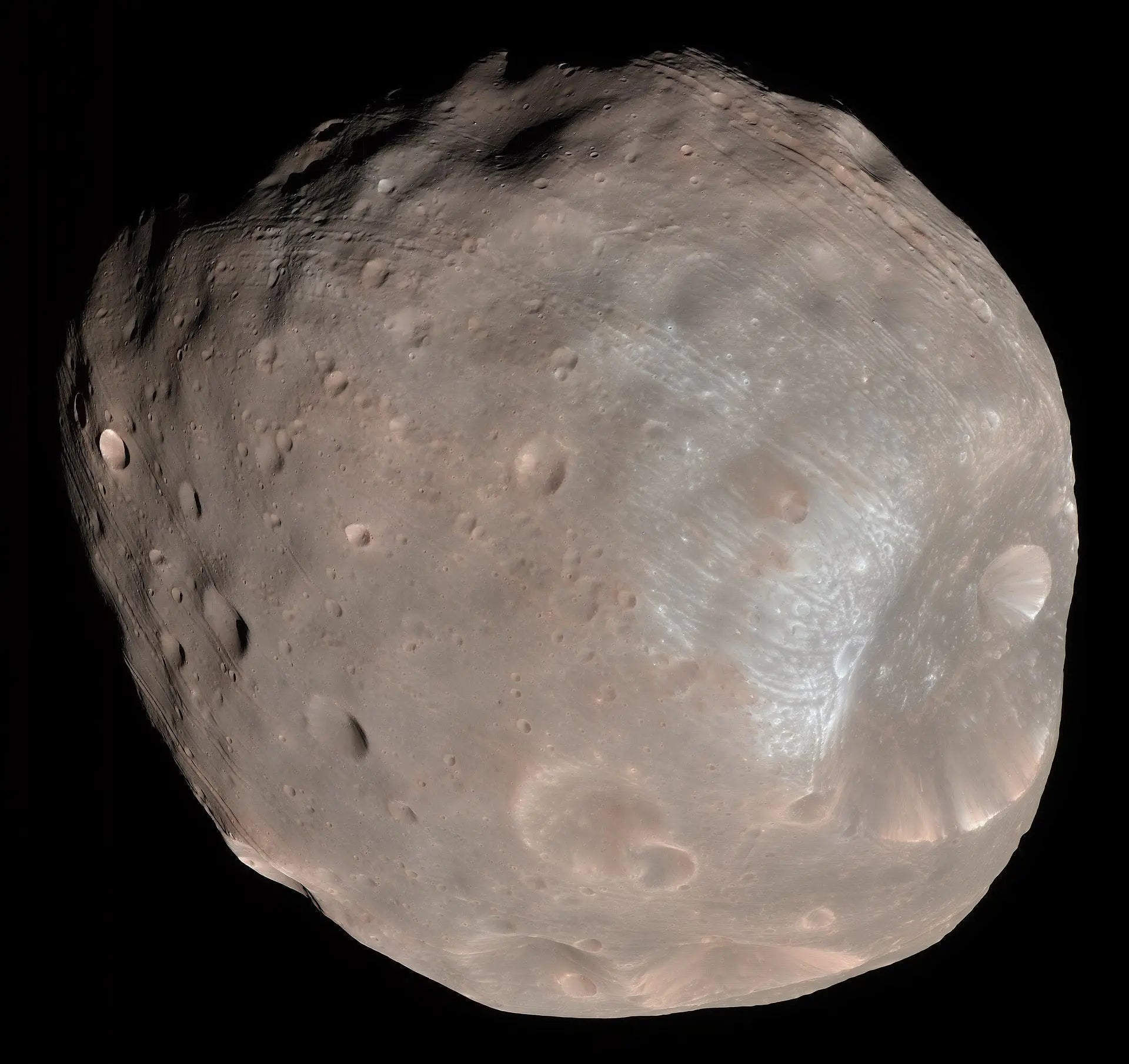Phobos and Deimos
Introduction
Mars, the fourth planet from the Sun in our solar system, has long captivated human imagination. Its reddish hue, visible even to the naked eye, has earned it the moniker "The Red Planet." However, Mars is not just a solitary celestial body; it is accompanied by two small moons—Phobos and Deimos. These moons, although not as grand as our own Moon or the Galilean moons of Jupiter, hold their own mysteries and significance. This article delves into the fascinating world of Mars's moons, exploring their discovery, characteristics, and the scientific questions they pose.
Discovery and Naming
The moons of Mars were discovered by American astronomer Asaph Hall in 1877. After several nights of meticulous observations using the U.S. Naval Observatory's 26-inch telescope, Hall was able to confirm the existence of both moons. He named them Phobos (meaning "fear") and Deimos (meaning "terror"), drawing inspiration from Greek mythology where these were the sons of Ares, the god of war, who is the Greek counterpart of the Roman god Mars.
Physical Characteristics
Phobos
Phobos is the larger of the two moons, with dimensions of approximately 27 × 22 × 18 km. It orbits Mars at an incredibly close distance—just about 9,378 kilometers from the Martian surface. This proximity causes Phobos to orbit Mars in a mere 7.6 hours, which is faster than Mars's own rotation period of about 24.6 hours. The moon is irregularly shaped and heavily cratered, with its most prominent feature being Stickney Crater, a massive impact crater that stretches 9 km in diameter.
Deimos
Deimos is smaller, with dimensions of about 15 × 12 × 11 km, and orbits at a distance of approximately 23,460 kilometers from Mars. Unlike Phobos, Deimos takes about 30.3 hours to complete an orbit. Deimos is also irregularly shaped but is less cratered compared to Phobos. Its surface appears smoother, suggesting a layer of regolith—loose, fragmented material—covering the moon.
Composition and Origin
Both moons are composed primarily of carbonaceous material, similar to C-type asteroids. This has led to several theories about their origin. One theory suggests that Phobos and Deimos are captured asteroids from the asteroid belt between Mars and Jupiter. Another theory posits that they formed from debris ejected during a massive impact on Mars.
Scientific Importance
Tidal Forces and Future of Phobos
Phobos is gradually spiraling towards Mars due to tidal forces. Scientists estimate that it will either crash into Mars or break apart to form a ring system around the planet in about 30 to 50 million years. Understanding this process can offer insights into planetary evolution and moon-planet interactions.
Potential Stepping Stones to Mars
Both moons have been considered as potential stepping stones for human missions to Mars. Establishing a base on Phobos or Deimos could serve as a staging ground for future exploration of Mars, reducing the risks and costs associated with landing directly on the Martian surface.
Exploration
Several missions have been proposed to explore Mars's moons, including Russia's failed Phobos-Grunt mission and Japan's upcoming Martian Moons eXploration (MMX) mission, slated for launch in the 2020s. These missions aim to study the moons' composition, origin, and potential for future human settlement.
Conclusion
While they may be small and less glamorous than other moons in our solar system, Phobos and Deimos offer a wealth of scientific opportunities. Their unique characteristics and proximity to Mars make them intriguing subjects for study and potential gateways for human exploration of the Martian environment. As technology advances and our reach into the solar system extends, these enigmatic moons will undoubtedly continue to capture our imagination and scientific curiosity.



Share:
Exploring the Sun's Brilliance: Solar Filters
The Importance of Eclipse Glasses for Viewing the October 2023 Annular Eclipse